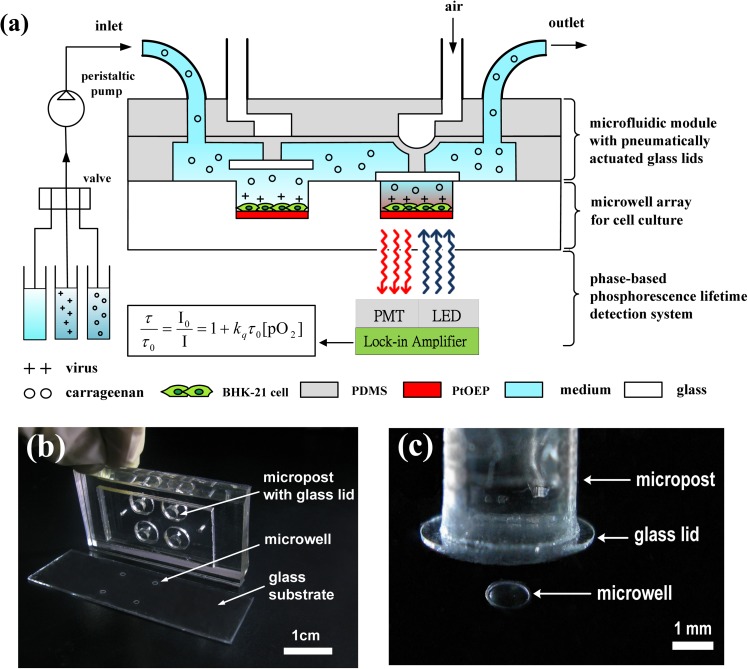FIG. 1.
A schematic of a microfluidic device combined with a light modulation system to assess the inhibitory effect of carrageenan on DENV infection via real-time monitoring of cellular OCRs by phase-based phosphorescence lifetime detection. The microfluidic device combines two components: An array of glass microwells deposited with PtOEP as the oxygen-sensitive luminescent layer and a microfluidic module with pneumatically actuated lids set above the microwells to controllably seal the microwells of interest. Long-term cellular OCR measurement was repeated over time using a periodic three-stage operation for replenishment of the microwells with fresh medium, entrapment of the chamber volume, and measurement of the oxygen concentration by lowering/raising the glass lids. (b) An image of the microfluidic device, which was assembled using three layers of PDMS structures that served as a microfluidic module and a glass substrate with 2 × 2 microwells inside a PDMS microchamber. (c) A close-up of one microwell with a pneumatically actuated lid set above it. The dimensions of the glass microwell were 1 mm in diameter and 50 μm in depth, which were etched into the soda-lime glass substrate.

